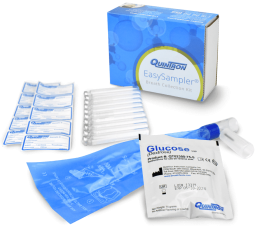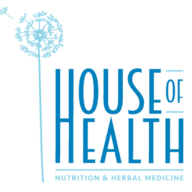What is The Metabolic Syndrome?
Sometimes called “Syndrome X” and also referred to as “Insulin Resistance”…
If you have metabolic syndrome you will usually have one of the following disorders:
- Hyperinsulinaemia – too much insulin in the blood stream or
- Type 2 diabetes – diagnosed by blood sugar testing
and two or more of the following:
- High blood pressure (over 130/80)
- High cholesterol
- Central (abdominal) obesity. A disproportionate amount of body fat in the abdominal region. Determined by having a waist circumference of 100cm or more in men and 87.5cm or more in women
- Hypertension (High Blood Pressure)
- Elevated levels of blood factors that promote blood clotting, such as plasminogen activator inhibitor – 1 (PAI-1) and fibrinogen (but these are not routinely checked)
- Hyperuricaemia. High levels of uric acid in the blood
- Microalbuminuria. Small amounts of the protein albumin, found on urine tests.
Women with a history of hirsutism (excessive body hair), oligomenorrhoea (scanty periods), infertility, or polycystic ovarian syndrome often have an underlying insulin and/or blood sugar control problem.
Episodes of low blood sugar levels (experienced as feeling faint or weak, rectified by eating), carbohydrate intolerance, sugar cravings, sleepiness after meals, insomnia (relieved by snacking), adult acne, and central abdominal obesity are all indicators of insulin excess. Abnormalities on a blood test and a slightly raised blood pressure are commonly observed in adults with high insulin, elevated insulin levels may start in childhood, particularly in the overweight youngster with abnormally high cholesterol.
Who Gets Metabolic Syndrome?
The most recent study in New Zealand (2002-2003) revealed that metabolic syndrome affects 32% of Māori, 39% of Pacific people and 16% of the rest of the population.
Studies have suggested that genetic factors may determine how insulin is handled in the pancreas and liver of some people. This, in turn, may influence the risk of developing insulin resistance and diabetes, especially in ethnic groups. There is also a higher risk in postmenopausal versus premenopausal women. It is felt that one or two risk factors exert an effect in a particular group, thus influencing the course of metabolic syndrome.
The prevalence of the metabolic syndrome in children increases with the severity of obesity and reaches 50 percent in severely obese youngsters.
What Causes It?
Key factors include obesity, stress and lack of physical activity as well as insulin resistance – which usually is the direct result of obesity. Your emotional health may influence the onset and ongoing symptoms associated with metabolic syndrome. Hostility, aggression, anger, etc. have been shown to correlate with other unhealthy lifestyle habits, such as poor diet and lack of exercise.
The risk of insulin resistance also increases during pregnancy, and is thought to have a cumulative effect with subsequent pregnancies.
Family history: if includes heart attacks, hypertension, and Type II diabetes, the likelihood of being insulin resistant increases. It appears about 50% of the variability of insulin may be due to genetic propensities; the other half seems related to lifestyle. Some researchers speculate that the genetic link may also be strongly influenced by mimicry. Offspring may (in fact) be mimicking the poor eating habits of parents, producing another generation plagued by obesity, insulin insensitivity, and diabetes.
Stage of Life: A recent Australian study tracked the metabolic health of 265 women aged 46-57 for five years as many of them progressed through menopause. The study found that a surprisingly high percentage of these women – nearly 1 out of 6 – developed impaired fasting glucose levels during this time.
During the menopause transition, more fat often starts to accumulate around the stomach and insulin levels begin to inch upwards. This subtle change can trigger a drop in levels of sex-hormone-binding-globulin, (normally attaches to sex hormones and makes them inert). With reduced SHBG levels, greater amounts of bioactive “male” sex hormones – androgens such as testosterone – begin to circulate inside a woman’s body.
Over time, this oversupply of active androgens can make women more male-like in appearance, fuel more obesity in the stomach region, and disrupt glycaemic control. Left unchecked, these imbalances often become self-perpetuating, thus stimulating further weight gain and metabolic dysfunction that eventually increases the risk of syndrome X, diabetes, cardiovascular disease, and certain cancers.
All of the factors associated with metabolic syndrome are interrelated.
Obesity and lack of exercise tend to lead to insulin resistance.
Insulin resistance has a negative effect on lipid production, increasing VLDL (very low-density lipoprotein), LDL, and triglyceride levels in the bloodstream and decreasing HDL. This can lead to atherosclerosis which, over time, can lead to cardiovascular disease, blood clots, and strokes.
Insulin resistance also leads to increased insulin and glucose levels in the blood. Excess insulin increases sodium retention by the kidneys, which increases blood pressure and can lead to hypertension.
Excess serum glucose is converted to fat and stored, thus increasing obesity.
Chronically elevated glucose levels in turn damage blood vessels and organs, such as the kidneys, and may lead to diabetes.
How is Metabolic Syndrome Diagnosed?
- Presence of two or more features as outlined above. In addition, the following tests are usually done:
- Glucose, insulin, cholesterol, uric acid
- Blood pressure, weight and waist measurements.
Can it be Prevented?
YES!
Top strategy is to achieve and maintain a healthy weight (click here to see how) and exercise regularly.
In children and teenagers part of the increased risk is due to:
- Decreased periods of exercise / low levelsl of activity
- Excessive time in front of the computer and television
- Unhealthy and/or up-sized meals
- Sugary drinks
- High-fat, high-calorie meals – especially takeaways.
We help parents guide children towards developing healthy eating habits, moderating computer or “screen” time and making sure that they get outside and play!
Treatment options
Successful management of the metabolic syndrome involves strategies that address each of the individual components of the condition (e.g., high blood pressure, high cholesterol and obesity).
The goal is to improve indicators without worsening other aspects of the condition. For example, some anti-hypertensive drugs (e.g., diuretics and beta blockers) increase the risk of elevated blood glucose and insulin resistance.
Medications
Medical drugs may include:
- Glibenclazide or Metformin– increase cell sensitivity to insulin
- Statins (Atorvostatin & Simvastatin [Lipex]) – to lower cholesterol
- Reductil – designed to decrease the absorption of fat by approximately 30 percent
Lifestyle changes
- Decrease the animal fats and damaged oil (superheated, processed) content in the diet,
- Avoid sweets, limit refined grains
- Stop smoking
- Avoid excessive alcohol use.
- Basic strategies such as having a nutritious breakfast that includes protein and fibre may help control one’s appetite and, therefore, curb snacking and binge eating later on.
- Weight loss: Losing weight increases levels of HDL cholesterol and decreases levels of triglycerides and LDL cholesterol. Even a modest reduction (5 to 10 percent of total weight) can increase the body’s sensitivity to insulin, lower blood pressure and decrease the impact of central obesity.
- Exercise: has a beneficial effect on all the factors in metabolic syndrome
The primary goals for medical management revolve around reducing the markers of the disorder. However in practice (from my observation) doctors are generally not very pro-active in supporting their patients to do the single most important thing – lose weight.
Thus treatment is a long-term medical maintenance regime. Along the way, the cocktail of drugs increases, with more being added to control side effects that arise. One fairly common side effect of statin therapy is a negative effect on the body’s CoQ10 – required for cellular energy.
Statins block enzyme pathways involved in the production of cholesterol, thereby lowering cholesterol levels.The same enzymes that are involved in the production of cholesterol are also required for the production coenzyme Q10 the levels of which are lower in those taking statins. Coenzyme Q10 (ubiquinone) is important in the manufacture of ATP. Present in every cell, it is especially concentrated in the very active cells of the heart. Low levels of CoQ10 are implicated in virtually all cardiovascular diseases, including angina, hypertension, cardiomyopathy and congestive heart failure.
How does Naturopathic Management Differ?
The underlying principle of naturopathy is to look beyond the presenting symptoms. The patient is considered in their totality, rather than a collection of symptoms. The consultation is a lengthy one, to gather information about health history, diet, lifestyle and so on. From this comprehensive background your naturopath may initiate a plan that addresses many different aspects of your health. Examples include:
- support for other organs – adrenal glands, liver, thyroid if indicated
- providing psychological and nervous system support where self esteem, stress, anxiety are big factors.
In terms of the challanges and gains from this approach, a holistic approach to restoring health means:
- it requires you (the patient) to be an active participator in the treatment regime.
- treatment may take longer to reduce the main markers (such as elevated cholesterol)
- compliance may be more difficult to achieve due to the nature of some of the remedies (eg Herbal tinctures)
- the ultimate result could see the patient returned to a “normal” level of functioning, without the side-effects commonly experienced with medication.
- there is a stronger emphasis on dietary changes and weight loss – these areas often receive more focus with a view to educating the patient than the medical approach.
Diet, herbs and nutritional supplements are carefully matched to the individual. Specific nutrients that may be indicated to help improve insulin and glucose metabolism, provide antioxidants, manage blood pressure, support healthy cholesterol levels, reduce stress and to counteract depletions and side effects of prescription medication. Managed weight loss is central to treatment as well as implementation of an exercise regime to enhance the body’s ability to utilise glucose more effectively.
Do You Have Insulin Resistance ?
Take the following quick quiz to assess your risk for insulin resistance.














